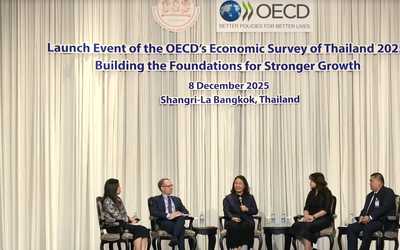Bank Supply Shocks and Firm Investment: A Granular View from the Thai Credit Registry Data
Abstract
This paper attempts to link bank loan supply shocks to the real economic activity at the firm and aggregate level. We apply the methodology pioneered by Amiti and Weinstein (2017) to bank-firm credit registry dataset in Thailand for the period of 2004–2015. Loan growth dynamics of individual banks and individual firms are exactly decomposed into a time series of bank, firm, industry, and common shocks. We show that the bank and firm shocks obtained using this method are consistent with various measures of individual banks' and firms' balance sheet health, supporting the validity of the shock decomposition. Results from firm-level regressions indicate that bank supply shocks do matter for firm investment activity even after controlling for common, industry, firm-specific shocks and firm's leverage. We find that Thai firms are generally highly sensitive to bank lending shocks, particularly firms that borrow from only one bank and have low propensity to switch to another bank. The size and the dynamics of bank shocks appears to differ between heathy versus unhealthy, and small versus large firms, suggesting differential bank lending policy across different types of firms. At the aggregate level, we find that granular bank shock accounts for around 37 percent of aggregate lending growth and is the major source of financial shocks driving aggregate investment.









